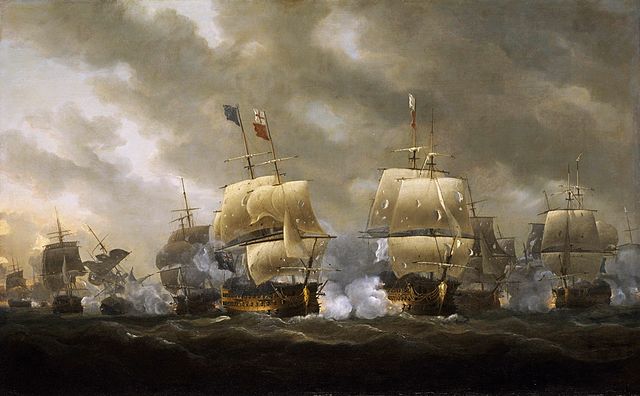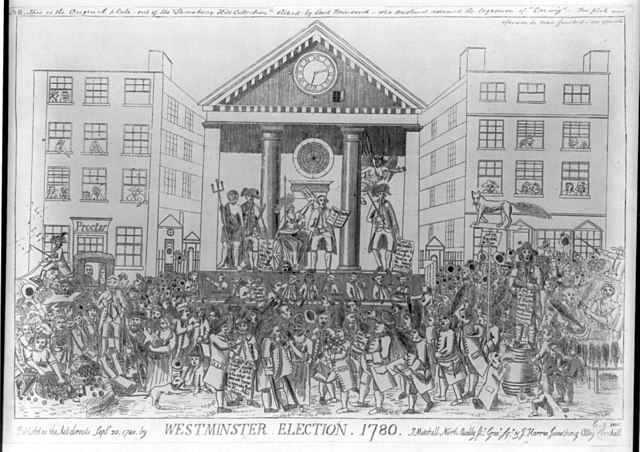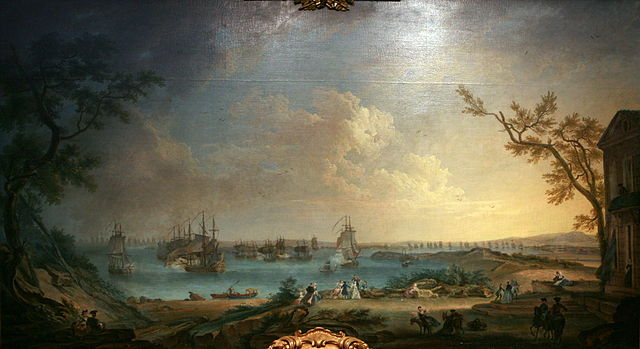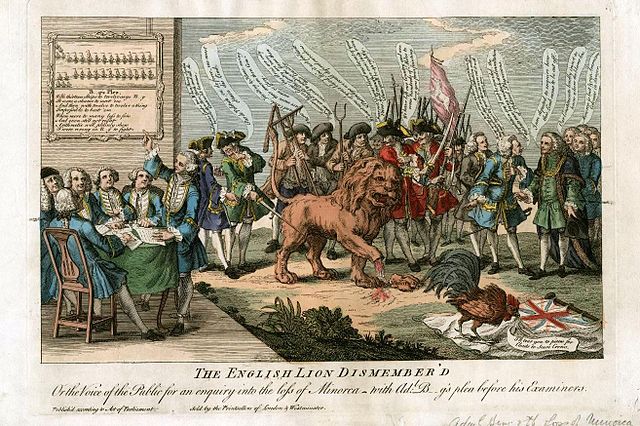James Young (Royal Navy officer, born 1717)
James Young was an officer of the Royal Navy who saw service during the War of the Austrian Succession, the Seven Years' War and the American War of Independence, rising to the rank of admiral of the white.
The Battle of Quiberon Bay, an 1812 work by Nicholas Pocock. Young flew a broad pennant while in command of HMS Mars during the battle.
Historical engraving of the island of St Eustatius. Young struggled to cope with the open assistance provided by the nominally neutral Dutch to American forces during the American War of Independence.
Print shows Lord Lincoln standing on the right of St. Paul's portico, Charles James Fox standing in the center with Britannia and the British lion, and on the left, James Young, acting as proxy for Admiral Rodney, with Neptune, during the Westminster election of 1780
The Battle of Minorca was a naval battle between French and British fleets. It was the opening sea battle of the Seven Years' War in the European theatre. Shortly after the war began British and French squadrons met off the Mediterranean island of Minorca. The French won the battle. The subsequent decision by the British to withdraw to Gibraltar handed France a strategic victory and led directly to the Fall of Minorca.
The departure of the French squadron on 10 April 1756 for the attack against Port Mahon, by Nicolas Ozanne
Attack and capture of Fort St. Philip on the island of Minorca, 29 June 1756, after the naval battle.
English and French fleets
The English Lion dismembered after the French conquer the island of Menorca.







